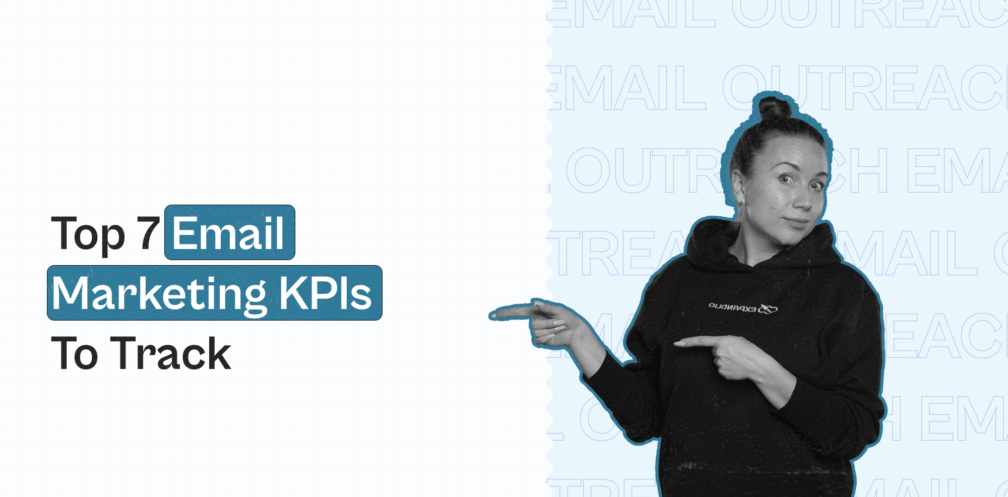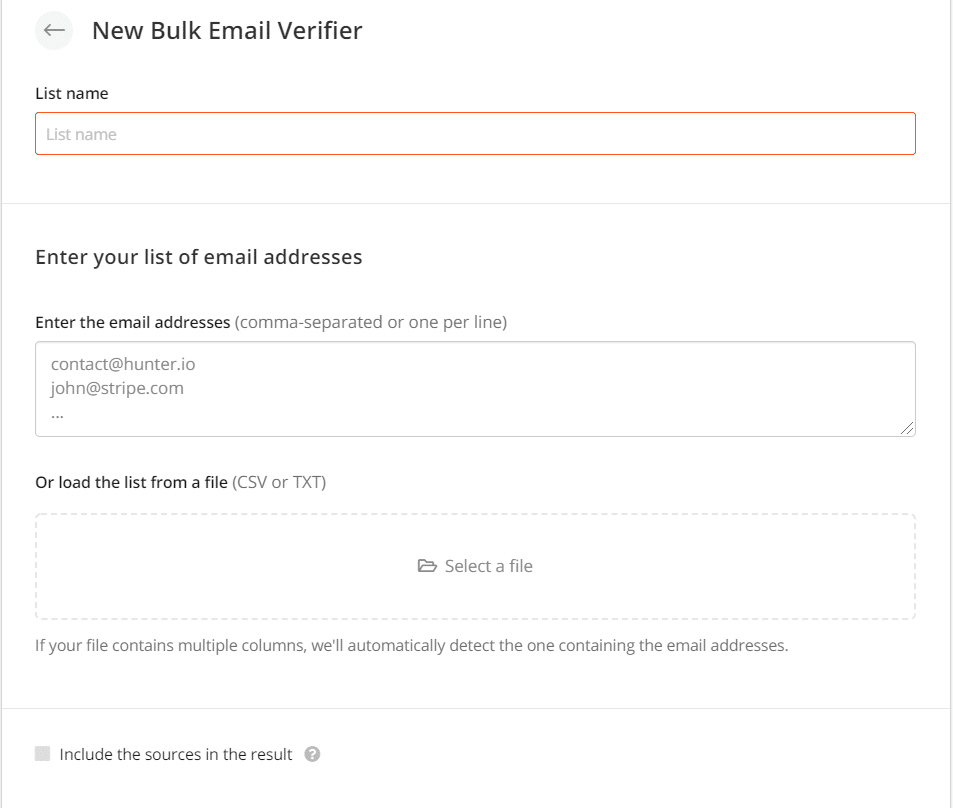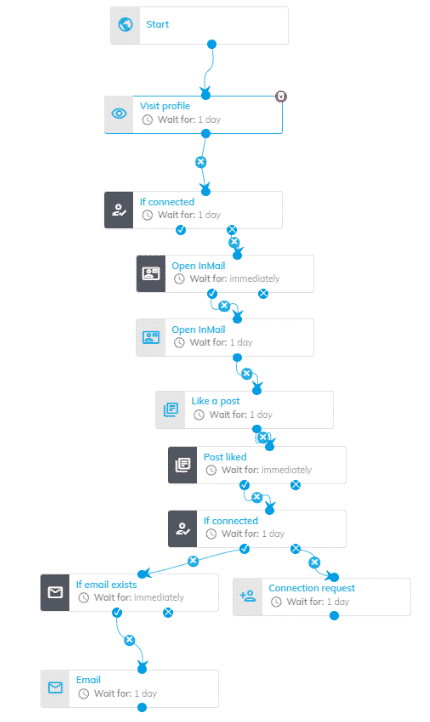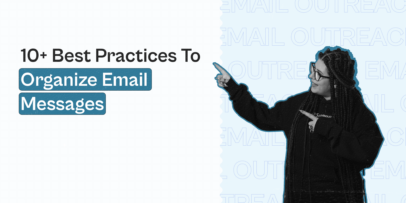Top 7 Email Marketing KPIs to Track in 2024 – Expandi

Wondering if your email marketing is performing well or if it’s not bringing you the ROI?
It sounds like you should be tracking particular email KPIs (key performance indicators) if you want to get a better idea of how your campaigns are performing.
Every business owner and most marketers should regularly examine their marketing and operational activities to see what’s working and what’s not.
And based on important key performance indicators we’re about to cover below, you’ll know better if there’s anything you should change, optimize further, A/B test, or stop entirely.
In this ultimate guide to email marketing KPIs, we’ll go over the essential email outreach indicators you should be tracking, how to calculate them, and more.
Here’s the short version of what you need to know about your email marketing strategy:
- Tracking your outreach email marketing metrics will help you verify your performance based on data.
- Certain email marketing KPIs point to certain aspects of your outreach campaigns. For example, if you’re getting low open rates, chances are, you need to re-optimize your email subject line.
- There are several email marketing key metrics every business owner should be tracking in their outreach, regardless of the niche or offer.
- The only way to know if your email campaigns are working the way you want them to is by tracking your KPIs and data.
Read on for more actionable steps and learn how to improve your sales outreach campaigns based on which performance indicators.
Here’s what you’ll learn:
- Catching Up On Email Marketing Campaigns: Overview Before Looking At KPIs
- Top 7 Email Marketing Outreach KPIs to Track In Your Campaigns And How to Calculate Them
- Average Email Marketing Industry Benchmarks To Keep In Mind And Compare Your KPIs
- Top 5 Cold Email Marketing Best Practices to Boost Your KPIs
PS – We’re constantly sharing the latest proven email as well as LinkedIn outreach templates in our private Facebook group – join the LinkedIn Outreach Family now!
Alright, now strap in. Here’s everything you need to know about email marketing KPIs.

Catching Up On Email Marketing Campaigns: Overview Before Looking At KPIs
Now, here’s the thing:
Your email marketing KPIs don’t exist in a vacuum.
For example, many things affect your email open rates.
Typically, your subject line dictates how many people click on your cold email.
But that’s not always the case.
You also have to take into consideration:
- Is your email account warmed up?
- Are you targeting the right group of people?
- Are you optimizing for email deliverability?
- Are you following up?
So, let’s briefly cover this part first.
Email warm-up and delivery rate
A few factors go into this – some technical, some less so.
So, if you want to read the full, more detailed guide on email deliverability and how to send emails safely, check out our guide to email warmup.
Here’s the short version, though.
You’ll want to check most of these off before you start analyzing your email marketing KPIs.
The idea is that if you’re optimizing for deliverability rate and making sure more people are receiving your emails, your email KPIs will be higher as well.
If you’re getting suspiciously low email open rates, chances are, you might have done the technical setup wrong!
Check out Lemlist’s technical deliverability checklist if you want to read more on that.

Until then, here’s a quick email marketing recap before analyzing your KPIs:
- You’ll want a custom, separate domain to send emails from. In case your main domain gets burned, you can use a separate one as a safety measure.
- Then, you’ll want to authenticate your email account technicalities – such as your DKIM, SPF record, DMARC, and more. This may sound complicated, but it’s actually very straightforward. See the checklist mentioned above for more info.
- To prepare for outreach, you’ll finally want to warm up your email inbox. This will signal Gmail that your domain is legit, authentic and that there’s human behavior associated with it. This will help in being able to send more emails per day.
Now, once you’ve got that down, you’ll want to look at some essential outreach elements that also play a massive role in your email marketing KPIs.
Essential email marketing elements that affect your KPIs
Another factor that affects your email KPIs and results is how you structure your emails.
This includes things like your outreach templates, conversion-driven factors, personalization, who you’re targeting and selling to, and other elements.
For example, your subject line affects your open rate KPIs, and your sales pitch or CTA usually affects your reply rate.
Below, we’ll also cover some industry email marketing benchmarks and specific KPIs you should be aiming for.
But until then, here’s an overview of essential email elements you should include to boost your overall campaign performance and KPIs.
- A strong hook – How you start an email determines if your prospects will read the full thing. Keep it short, address relevant pain points, and use personalization to stand out.
- Personalization – When personalizing your emails, approach it this way: Your messages should be so specific for each prospect that they wouldn’t work for anyone else.
- Clear CTA – Finally, you need a strong and very clear CTA, so your prospects know what they need to do next. For example, if you want to get on a call with them, let them know two specific days that work for you – instead of asking if they’d be open to a call. The less friction, the better.
We covered all this and more in our complete email sequence outreach guide. Check that out to learn the best ways to convert cold traffic into warm prospects via email marketing.
Now, some other elements will also affect your email marketing KPIs – such as your offer, copywriting, sales pitch, and more. But many contextual things also depend on your target audience.
But to get a better idea of all that, it’s worth taking a look at the main email marketing KPIs and how to calculate them. From there, you’ll get a better idea of how to boost your overall email marketing.
Top 7 Email Marketing Outreach KPIs to Track In Your Campaigns And How to Calculate Them
Have you launched your first email marketing campaign?
Here are some key email outreach KPIs you should be tracking and how to calculate them.
1. Bounce rate (soft and hard bounce rates)
Bounce rate percentage means the total emails sent that could not be successfully delivered to the email recipient’s inbox.
Just because you send 100 emails in your outreach campaign doesn’t mean all 100 of your emails will be delivered.
That’s because a 100% email deliverability rate is very rare.
There are two kinds of bounce rates:
- Soft bounce – Result of a temporary problem with a valid email address. For example, your email recipient’s inbox was full, or there was a technical server problem.
- Hard bounce – Result of an invalid, wrong, or non-existent email address. You should immediately remove hard bounce addresses from your email list because ISPs (internet service providers) use bounce rates as one of the key factors to determine a sender’s reputation.
How do you calculate your email bounce rate KPI?
Bounce rate is calculated as the total number of bounced emails divided by the number of emails sent, multiplied by 100.
For example, if 75 emails bounced from your 10,000 total emails sent, that’s a 0.75% bounce rate performance indicator.
To reduce your hard bounce rate and make sure your emails are landing, you’ll want to be verifying your email list before sending out your email sequence.
For that, you can use an email verifying tool, which simply lets you know if your emails are valid or not.

For more info on removing invalid email addresses, check out our complete guide to finding someone’s email address.
2. Open rate
Pretty self-explanatory KPI, right?
Your email open rate KPI is the percentage of recipients who opened a given email.
Open rates can be a successful measurement of your email marketing campaigns. The more interested your email recipients are in what you have to say, the more likely they will open your emails.
However, this doesn’t always mean you’re running effective email campaigns.
Open rates typically indicate how well your subject lines are performing.
As a general cold email benchmark, you should be aiming for an average open rate of 49%-70%.
3. Click-through rate
Click-through rate is another self-explanatory but important KPI.
As the name implies, this metric indicates how many people have clicked on a link inside your email.
Email CTR is a vital metric for all email marketers to be tracking, as it gives you direct insight into how many of your email recipients are engaging with you.
Usually, the link inside your emails is your booking (Calendly) link.
And this correlates to your sales pitch and value proposition.
In other words, if people aren’t clicking on your links, chances are, they’re either not interested, or you’re targeting the wrong people.
4. Click-to-open rate (CTOR)
Your click-to-open rate determines how effective your email content is. This is the number of opens compared to the number of click-throughs.
In other words, from the total number of people who opened your email, how many of them actually clicked on a link?
This email indicator says how well your subject line and email content (text) work together.
So, if your subject line has a lot of opens but few clicks, then there probably was a disconnect.
Meanwhile, if you had a lot of clicks but few opens, you probably had an excellent offer but not the best subject line.
5. Reply rate
An email response rate is dependent on how direct your marketing emails are.
You can calculate this KPI by dividing the number of unique email responses received in one campaign by the number of delivered emails in total.
Take the resulting number and multiply it by 100 to get a percentage indicator.
Then, you can use this indicator to gauge the rates for your future campaigns.
Response rates are important because they play a part in your lead generation, engagement, and overall sales.
It also depends on your “ask” and email CTA.
Things like:
- How you end your emails (question or direct CTA).
- Any qualifying questions your leads might have. E.g., about your service or offer.
- Booking a call and availability.
- And so on.
On average, for this KPI, you might want to aim for at least 5%-10%
6. Conversion rate
Arguably the most crucial email marketing KPI: The conversion rate.
Because, after a recipient has clicked on your email, the next goal is to get them to convert on your offer. In other words, you want them to take a specific action.
Don’t confuse this with dollars or final ROI. Depending on your cold outreach email, this KPI might be a sale, registration for an event, subscription for your product, booking a call, downloading something, or more.
Essentially, the conversion rate KPI is the percentage of people who completed your desired action from the email sent.
To calculate your email conversion rate, you need to divide the number of people who took your desired action by the number of total emails delivered and then multiply it by 100.
For example, let’s say you send out 10,000 emails and 400 people complete your desired action. Then, your conversion rate is 4%.
7. The overall return on email investment (ROI)
Finally, this last email indicator zooms out and looks at your overall marketing funnel.
Looking at your email marketing campaigns in the scope of your overall marketing plan – you’ll want to know if it’s worth it to be sending emails in the first place, based on a specific financial number.
This KPI cares about how many leads you actually generated via email marketing and how it translates to an actual revenue number.
The overall ROI means total revenue divided by total spending at its core.
Here’s how to calculate the return on email KPI:
$ in additional sales made minus $ invested in your email campaigns, divided by $ invested in the campaign, and multiplied by 100 to get the percentage number.
For example:
$1,000 in additional sales minus $100 invested in the campaign, divided by $100 invested, multiplied by 100. Which would be a 900% return on the investment for the campaign.
It might seem like a very high number, but email marketing is famous for having a high ROI.
So, to recap, the essential email marketing KPIs you should be tracking are as follows:
- Bounce rate.
- Open rate.
- Click-through rate.
- Click-to-open rate.
- Reply rate.
- Conversion rate.
- Overall ROI.
While there are some more soft email KPIs possible to track, the above indicators are the ones that usually make or break your outreach campaigns.
So, you should be tracking those in email outreach at all times.
Another equally important part of tracking your marketing indicators is knowing why you’re tracking them in the first place and what you should be doing with those percentage numbers.
For example, if you have an 80% email open rate, is that good or bad?
In a vacuum, that is a high open-rate, but what your leads are doing is equally important after opening your emails.
You should also know some industry email benchmarks to compare your email marketing KPIs to.
So, let’s start there.
Average Email Marketing Industry Benchmarks To Keep In Mind And Compare Your KPIs
One important thing to remember here is that your email marketing metrics and KPIs usually vary and depend on many things. Such as personalization, your specific target audience, your offer, and more.
So, you should only be using the below benchmarks as a general comparison point.
If your email KPIs are still below the industry average, you should strongly consider A/B testing or following the actionable steps below.
Speaking of, here are the industry average email marketing KPIs, according to HubSpot.
What is the industry average email KPIs for the business services niche?
- Open rate – 20%
- Click-through rate – 8.01%
- Bounce rate – 0.7%
- Opt-out rate – 0.5%
What is the industry average email KPIs for software and internet niche?
- Open rate – 20%
- Click-through rate – 7.18%
- Bounce rate – 0.8%
- Opt-out rate – 0.5%
What is the industry average email KPIs for the eCommerce niche?
- Open rate – 15.7%
- Click-through rate – 2%
- Bounce rate – 0.2%
- Opt-out rate – 0.3%
What is the industry average email KPIs for the marketing and advertising niche?
- Open rate – 17.4%
- Click-through rate – 2%
- Bounce rate – 0.4%
- Opt-out rate – 0.3%
Though, keep in mind this data is based on industry averages. So, you’ll want to aim for higher KPI results when doing outreach for the most part.
As a rule of thumb, you’ll want to be monitoring the following key email marketing metrics:
- The open rate should be above 50%
- Reply rate should be above 8%
- The bounce rate should be lower than 5%
- Unsubscribe rate Should be lower than 5%
You can start from 0 and audit your email reputation if you’re still not hitting those indicators.
We briefly mentioned this above, but some other best practices you should keep in mind with this checklist also includes:
- Going through a technical configuration.
- Re-warming up your email domain.
- Validating your email list quality and hygiene. Keep your bounce rates low and ensure you’re constantly verifying the emails you’re sending.
- Always send to business addresses of individuals (e.g., [email protected] instead of [email protected]).
- Sending high-quality cold emails – with no complex HTML or fancy signatures with many links.
And before we move on, here’s what your email KPI numbers say about your outreach campaign so that you know what you should be modifying or A/B testing:
- If you have a low email open rate, change your subject line.
- If you have a low email reply rate, change your sales pitch, value proposition, or call-to-action.
- If you have a low email meeting book rate, consider changing your offer or the audience you’re reaching out to. Keep in mind that in your emails, you should be pitching something your target audience is already buying or interested in.
Now that we’ve covered most of the essential email marketing KPIs let’s also look at some best practices that can help you hit those KPIs and get the most out of email.
Top 5 Cold Email Marketing Best Practices to Boost Your KPIs And Email Performance
Below, we’ll be looking at some best practices and examples to help you in your outreach.
Here’s what you need to know.
1. Use simple subject lines
All of the emails we’ve had the highest open rates had this one simple thing in common:
Very simple, 2-4 word subject lines.
Try to use simple personalization, intrigue your prospects, and give them a reason to click.
Simple subject lines like the ones you see below managed to get us 60-70%+ open rates consistently:
- Quick question
- Question for {first_name}
- Hey {first_name}, quick question
- Loved your thoughts on (topic)
- (Influencer or business CEO) liked this – you might too?
2. Always follow up
If you’re not following up, you’re leaving a lot of money on the table.
And this is extremely common. According to IRC Sales Solutions, 44% of salespeople give up after just one follow-up attempt.
Meanwhile, you increase your average email reply rate to around 13% if you follow up.
And statistically, you’re increasing your chances to convert the lead too.
If you haven’t done so yet, be sure to add a 4-9-15 day delay follow-ups in your email campaigns. Doing so is a guaranteed way to increase your reply rate KPI.
Not sure what to write in your follow-up emails?
Check out our top list of follow-up email templates to reduce the dread for selling and start closing more deals.
3. Always A/B test your outreach emails
As mentioned above, A/B testing different elements of your outreach email is a great way to boost your overall KPIs.
- Test only one element at a time (e.g., subject line, CTA, etc.).
- Make sure you have a significant sample size in your A/B testing.
- Once you find a winning element, move to the next test.
A good email marketer is never done with testing.
Only through a rigorous A/B testing process have we managed to achieve a reply rate as high as up to 55%.
4. Pursue the right prospects
We covered just how important it is to find the right people in our how-to find someone’s email address.
That means 2 main things:
- Make sure you’re reaching the correct person with a valid email. In other words, focus on targeting decision-makers (CEO, executives, directors) instead of gate-keepers (customer support, assistants, etc.).
- Make sure you’re using the correct email addresses (verified) and that you’re not landing in spam or promotions folders. The more high-quality emails you’re sending, the less your spam complaint rate will be as well.
As a salesperson, you should always be buyer-centric. Draft your emails in a way that focuses on what’s in store for the buyer. It has to be more about building solutions or relationships than pitching straightaway.
That will also depend on your ideal customer persona (ICP), so make sure you’re crafting your emails around them.
For example, if you’re pitching to digital publications in your outreach emails, you’ll want to include relevant content or storytelling.
Meanwhile, if you’re selling to SaaS brand owners, make sure to include relevant numbers or data for best social selling.
5. Go omnichannel
Finally, as good as email marketing is, if you want to capture your audience’s attention and boost your overall campaign KPIs, you should consider targeting them on an omnichannel basis.
It simply means engaging them through different touchpoints across different channels.
For example, sending a cold email and following up with a LinkedIn connection request reminds them about the email.
Then, to make things even more effective, you could also send a LinkedIn InMail or comment on their post as a final nudge.
Sounds complicated and time-consuming?
That might be the case if you were doing all this manually.
But fortunately, you don’t have to do that anymore as it’s possible and effortless to automate your omnichannel outreach marketing strategy with a few simple steps.
How does this work?
With tools like Expandi, you can set up simple but effective email and LinkedIn outreach campaigns based on actions (e.g., send a connection request) or conditions (e.g., email opened).
Or you can just use the many pre-built omnichannel outreach flows in the Expandi marketplace.

Overall, by automating email and LinkedIn actions to work together for you, you’re much more likely to see higher KPIs as a result.
For example, what is more likely to get a bigger response rate?
- Send a cold email and then automate multiple follow-ups to remind your lead to reply to the email.
- Sending a cold email, followed by a LinkedIn connection request saying you sent them an email and that you’d like to connect on LinkedIn as well, which would then be followed by an automated reply with the same “ask” as your email.
The second outreach flow has more touchpoints and is more likely to stand out.
Since most business owners get up to 100s of emails per day, standing out is essential if you want to boost just about any of your email marketing KPIs.
- Your leads are more likely to open your emails if they get an automated LinkedIn follow-up a few days after.
- Your leads are more likely to reply to your emails if you stay on top of their mind and engage them across different channels.
- Your leads are more likely to click on your links if they see them on LinkedIn as well.
- And similarly, you’re more likely to close deals (higher conversion rate) if you keep following up and engaging your leads across different platforms.
Conclusion
So, to recap, the top email marketing KPIs you should be tracking in 2024, along with a rule of thumb benchmarks, are as follows:
- Email open rates – should be above 50% on average.
- Email reply rates – should be above 8% on average.
- Email bounce rates – should be lower than 5% on average.
- Email unsubscribe rates – should be lower than 5% on average.
Industry average KPIs differ based on the specific niche, but regardless of that, you should also always be A/B testing to boost your email metrics.
Finally, to sum up, this ultimate guide to email marketing KPIs, let’s also go over some of the most frequently asked questions on the topic:
- How do you measure the success of email marketing?
To measure the effectiveness and success of your email marketing metrics, you should be looking at KPIs such as:
- Email bounce rate.
- Open rate.
- Click-through rate.
- Click-to-open rate.
- Reply rate.
- Conversion rates.
- Return on investment (ROI).
As each of these KPIs measures different parts of your email marketing efforts, you should be tracking everything carefully.
- What are good KPIs for digital marketing?
When setting and measuring KPIs for your digital marketing projects, you should be measuring metrics that directly affect the success of your projects and metrics that give you actionable data. For example, you should always measure KPIs like your open rate, reply rate, and conversion rates in email marketing. These KPIs are a good indicator of how your subject line is performing, whether your sales pitch is relevant, and if your offer is working.
- Which are the most important metrics to track in email marketing?
Some of the most important metrics to track in email marketing include:
- Open rate.
- Bounce rate.
- Reply rate.
- Click-through rate.
- Booking rate.
- The overall return on investment.
While there are many other metrics you could be tracking, the above indicators give you actionable steps as to how your email marketing efforts are performing and if there are specific steps you should take based on those metrics.
PS – need more info on email marketing KPIs you should be tracking in your sales outreach?
Be sure to join our private Facebook group – The LinkedIn Outreach Family, which covers all things email marketing, LinkedIn and omnichannel outreach, and more.
Finally, if you’re ready to launch your own email and omnichannel outreach campaigns, be sure to sign up for a free live demo and get started with using Expandi with a free, 7-day trial to automate your sales outreach now!
You’ve made it all the way down here, take the final step

